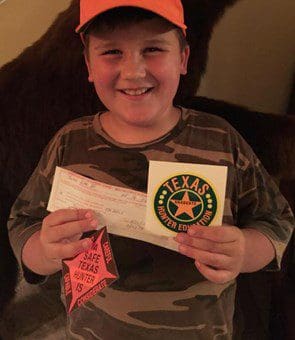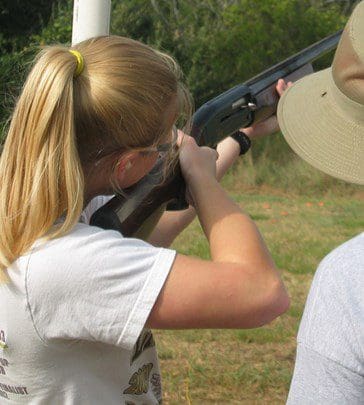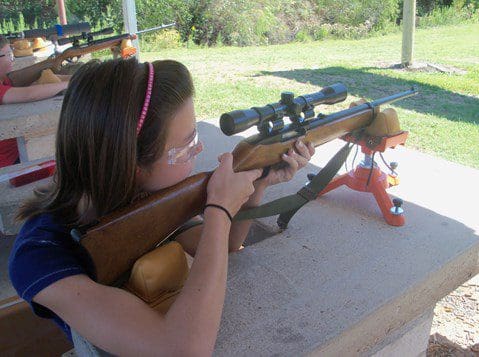4 Mistakes to Avoid When Introducing Kids to Hunting
Mentoring youth hunters means dedicating the time, expense and providing the right equipment for the best outdoor experiences possible.
by HEIDI LYN RAO posted on October 11, 2023
NEWS, LIFESTYLE, TIPS & TACTICS, HUNTING
Support NRA Women DONATE

4 Mistakes to Avoid When Introducing Kids to Hunting – NRA Women.com
Many kids look forward to getting in the field for their first hunt with a parent or other adult role model. As such, it’s the adult’s responsibility to take this opportunity to mentor in the most positive way possible. What happens on this first hunt can make or break a child’s decision to continue hunting.
Most adults thoroughly enjoy teaching youth how to hunt, with many resources available for mentoring assistance, usually through state Game & Fish Department programs, and many privately run organizations. Despite all the available resources, adult mentors often make unintentional mistakes that can affect a youth’s opinion of hunting. These can include lack of pre-hunt preparations; providing the youth with a firearm that does not fit; using the wrong caliber or gauge and using inadequate ammunition.
Pre-Hunt
There is a lot more involved in going hunting than just heading out the door into the field. This is especially true for a first-time hunter. All too often, a mentor will take a youth to a gun range one time to instruct them on the safe and proper use of a firearm. I do not know anyone who would agree that taking a new shooter to the range only one time is all that is needed to make a clean and ethical shot on an animal.
This is the No. 1 mistake an adult mentor can make. Committing to only one trip to the range with your new shooter before his or her first hunt can ultimately lead to a wounded or lost game animal during the hunt. The sight of a wounded animal can leave a lasting visual for a young hunter. Just as bad is the thought of a lost animal that goes to waste. Anyone who has ever participated in a youth hunt will tell you that these things can be a deal-breaker for a new hunter. If you agree to being an adult mentor to a young hunter, you need to make the commitment to spending more than just one afternoon at the gun range with them.

The second pre-hunt mistake many adult mentors make is not getting their youth hunters into aHunter Education course. A Hunter Ed class is important for everyone–new or experienced, young or old. Regardless if you were born before the required date to take the class before you can legally hunt in your state or province, it is always beneficial to seek additional training. Hunter Education teaches firearm safety, hunter ethics and game laws. This class also has unintended consequences for youth hunters, giving them a sense of ownership in their upcoming hunt. This is because they have now committed time toward their future hunt, and it builds their confidence when they pass the course.
Firearm Fit
Having a firearm that fits the shooter sounds easy enough but, many adult mentors lack the proper equipment to take a youth hunter to the gun range or on a hunting trip. I am contacted by many parents that want rifle or shotgun lessons for their son or daughter because they have not had any luck in teaching them how to shoot. When I meet the parents and youth at the range, they almost always have a firearm that does not fit the youth shooter.
Shooting a firearm that does not fit can have many disadvantages. First, it can be painful. This is because the firearm cannot be correctly mounted to provide a proper hold, therefore adding to the “felt” recoil after pulling the trigger. Shooting a rifle or shotgun that does not fit is not only painful but prevents the shooter from properly lining up their front and rear sight, crosshairs of a scope, or properly follow through while swinging a shotgun. Without a proper hold, it is almost impossible to hit your target consistently and accurately.

If you have young children or plan on participating in youth hunts, you need to be responsible enough to have the appropriate equipment. A firearm that fits is important for success. Invest in youth rifles, shotguns and equipment your first-time hunters need. Success is hitting the target where you are aiming, hitting your intended game, and making a quick clean and ethical kill.
Caliber & Gauge
Adult mentors must make sure they correctly match up the caliber or gauge of the firearm with not only the game being hunted, but with the shooter. The most common mistake most adult mentors make is providing a firearm chambered in too small of a caliber. This is seen mostly in modern sporting arms. Many of these firearms are chambered in calibers that were traditionally considered too small for deer-sized game animals. The most common modern sporting arms calibers come in .223 Rem or 5.56mm NATO. Without getting into the debate of the lethality of these rounds, many would agree that these are not the best caliber choices for first time hunters. Luckily for adult mentors, most game animals in North America can be effectively hunted with a .243 Win. The .243 Win has adequate knock-down power as well as manageable recoil.
The most common mistake I have witnessed is when adult mentors provide shotguns to first-time hunters. Almost always and without exception, new shooters are given a 20-gauge shotgun. The biggest mistake an adult mentor can make is giving a first-time hunter a .410 shotgun, as the chance of success in downing their game is almost zero! The 20-gauge and .410 shotguns are given with good intentions. They are provided because these shotguns have considerably less recoil than the more common 12-gauge shotgun. That said, there is also considerably less shot contained in the 20-gauge shotgun shell. Like the .410 shotgun, this means the first-time hunter will probably have less success. Lack of success leads to frustration. Frustration leads to not having a good time. Not having a good time leads to giving up on hunting.
As an adult mentor, you should never put a firearm in the hands of a new shooter that has too much recoil for that individual. This can make a new shooter “gun shy” and ultimately not enjoy hunting. As shotguns go, consider 12-gauge semi-automatic shotguns. A 12-gauge shotgun shell has more shot contained within it than a 20-gauge shotgun shell, and the semi-automatic shotgun tames the recoil.
Ammunition
The most common mistake I have witnessed is when adult mentors provide poor quality ammunition. The .243 Win, as mentioned earlier, is more than adequate in taking most North American game animals but is often subjected to poor quality ammunition. The .243 Win probably has more options of ammunition than any other caliber. Unfortunately, there is also very cheap and poor-quality ammunition available. If you are mentoring a youth hunter, it is your obligation to provide quality ammunition. The difference can be between a recovered animal and wounding and losing one.

If larger caliber rifles are needed for elk-sized game animals, look for “reduced recoil” ammunition. Remington make a great “reduced recoil” .30-06 Sprg. round. Additionally, many of the higher caliber ammunition can be purchased in different bullet weights and velocities.
Hunters today have many ammunition options that can be matched to the shooter but do not affect performance. Buy quality ammunition for a quality experience for your young hunter!
The next generation of hunters will ensure that our hunting heritage continues. It is up to us to make sure that we recruit this new generation. How we recruit this next generation makes a difference. Adult mentors must take their role seriously. This means dedicating the time, expense, and providing the right equipment to first-time hunters for the best outdoor experiences.
